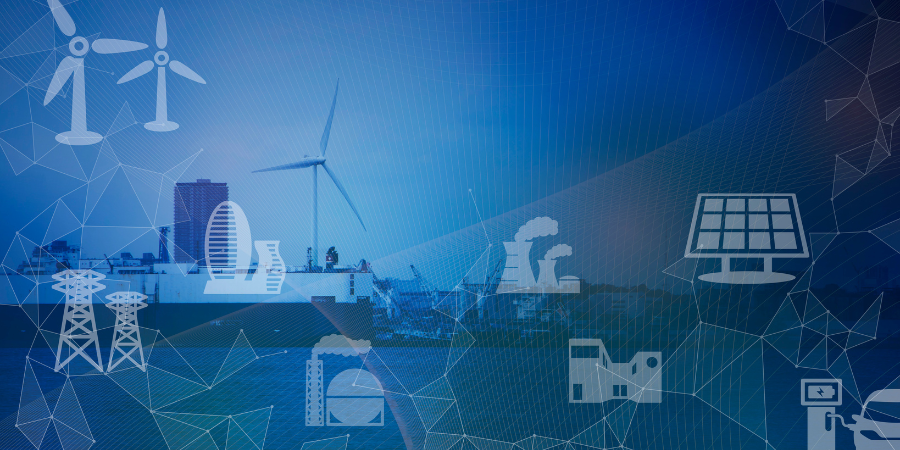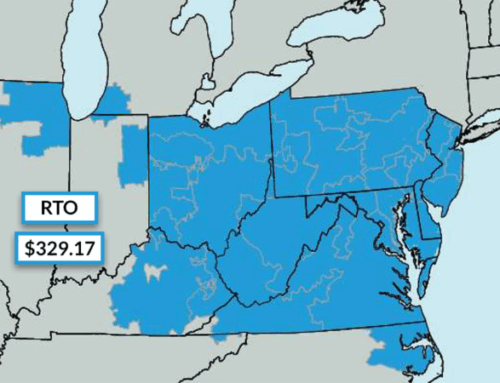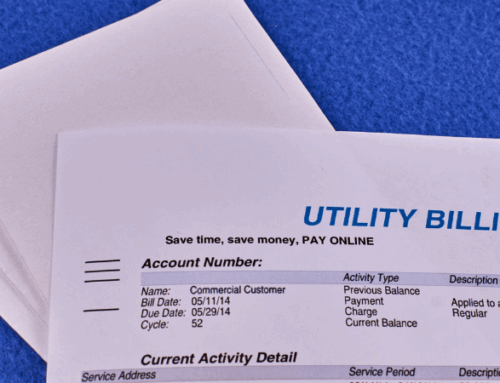Smart grids and grid modernization represent the future of the electrical transmission network. Using the latest advanced technologies, the goal of grid modernization is to enhance the reliability, efficiency, and sustainability of our electric power system. Today, the electric grid is struggling to keep up with the exponential growth of energy demand. The smart grid alternative is designed to incorporate artificial intelligence, automation, and analytics to make the electric grid more efficient. This energy transformation is yet another result of the global energy transition. In this article, we explore the key strategies, cutting-edge technologies, and numerous benefits that smart grids and grid modernization bring to both consumers, utilities, and energy retailers.
Understanding Grid Modernization
Grid modernization involved upgrading and overhauling the electrical system to make it more reliable and efficient. Let’s explore some of the reasons why grid modernization is becoming more and more important in the United States.
What Is Grid Modernization or Utility Companies?
Utility companies are incentivized to make the local electric grid more reliable, efficient, and able to handle change. Since utilities are responsible for the financial upkeep of the local grid, the more efficient their power lines, the better it is. They do this by adding new technology like automatic controls, the Internet of Things (IoT), and energy technologies that monitor grid outages in real-time. These innovations help utilities create stronger and more responsive electricity grid networks.
The Purpose Of Grid Modernization Related To Smart Grids
Grid modernization is the foundation for smart grids. Modernization allows for smarter electrical management and makes it easier to deploy renewable energy sources like solar and wind. Remember, electric grid operators are responsible for balancing electricity supply and demand in real-time, so making the grid automated and “smarter” allows them to do their job in a more efficient manner. Grid modernization is a prerequisite for developing a smart grid.
Why is Grid Modernization Important?
The modernization of the electric grid is imperative for a few major reasons.
- First, consumers continue to use more and more electricity each year. This growing demand places a lot of stress on older transmission lines and could cause them to fail in the future.
- Second, as renewable energy generation such as wind and solar continues to grow, we need systems in place that can manage this unpredictable power source. After all, it is hard for grid operators to predict the wind and times the sun will be shining.
- Finally, grid security is becoming a larger and larger threat. Modernizing the electric grid to combat external attacks is critical to energy reliability.
Understanding Smart Grids and Their Impact
Smart grids are the new trend and direct result of grid modernization. Utilizing modern technology, such as artificial intelligence and IoT, grid operators are able to automate many tasks. Let’s explore smart grids in more detail.
What Are Smart Grids?
Smart grids use digital technology to manage electricity flow and issues more intelligently. Unlike spoke and wheel power grids where power flows from a central power plant to your business, smart grids allow for more dynamic energy sources. Energy generation coming from distributed energy resources can easily be integrated into existing grid infrastructure using smart grid technology. Smart grids allow operators to predict supply and demand in real-time and automatically adjust.
Smart Grids vs. Microgrids
Both smart grids and microgrids aim for more efficient energy management, but they serve two different purposes. A smart grid covers a large area and uses technology to improve the entire electrical system. A microgrid is a smaller, local grid that can run on its own as a distributed energy resource, or connect to the larger electric grid.
Advantages And Disadvantages Of Smart Grids
Smart grids have many advantages when compared to conventional electric grids. They’re more efficient and reliable, and give operators more control. For example, smart grids are great at predicting and fixing problems before they happen, which can help to curtail maintenance costs. However, smart grid technology can be expensive and they come with many cybersecurity risks that need to be addressed.
Building A Smart Grid Modernization Strategy
Building a smart grid modernization plan is no easy task. Most of the current electrical infrastructure is dated but also functioning. There needs to be a careful strategy when it comes to modernizing existing equipment. Let’s explore ways grid operators can implement a smart grid strategy.
Practical Guidance For Making A Smart Grid Modernization Plan
The first step to creating a smart grid plan is to identify the existing infrastructure, current areas of vulnerability, and goals of the modernization plan. This plan can involve researching and adding new technology like IoT and automation that will result in a more efficient and adaptable electric grid.
Smart Grid And Modernization Technology Solutions
There are existing energy technologies that make smart grid modernization possible. These include:
- Advanced Smart Metering: allows for real-time energy usage monitoring
- Grid Automation and IoT Technology: allows for the prediction of problems before they occur
- Data Analytics Software: allows for the better management of energy consumption
Without these technologies and tools grid modernization would not be possible.
The Three Layers Of A Smart Grid
There are three primary layers of a smart grid: the physical infrastructure layer, the communication layer, and the application layer. Let’s explore the anatomy of a smart electric grid in more detail below.
Physical Infrastructure Layer
Upgrading the physical transmission equipment and transmission lines are a big part of electric grid modernization. This includes improving substations, power lines, transformers, and adding sensors to equipment.
Communication Layer
The communication layer is about creating a network of physical devices that connect across the electric grid. Also known as the Internet of Things (IoT), this stage allows for real-time data exchange between different nodes on the grid network. This becomes essential for managing the grid and responding to problems.
Application Layer
Smart grid software plays a key role in the application layer. Software provides tools for data analysis, predictive analytics, and gives grid operators more control over energy sources. The application layer acts as the brain that controls the communication layer, which in turn, sends signals to the physical layer.
Grid Modernization Technologies And Solutions
Let’s explore some of the important technologies and solutions that allow for smart grid modernization.
Smart Electric Grids And IoT Technologies
IoT is a technology that allows physical devices to create a communication network without a central relay. This can help predict problems and find outages before they happen on smart grids. Sensors and connected equipment in the IoT network provide real-time data back to a central system. IoT technology is able to deploy at scale due to its ability to create a vast network without the need for a centralized modem.
Renewable Energy Integration
Smart grids make it easier to deploy renewable energy sources like solar and wind. These energy sources have many ups and downs due to their dependency on the physical elements of nature. Smart grid tech allows the grid to be stable despite these unpredictable energy sources.
Smart Metering And Customer Empowerment
Smart meter technology provides customers with detailed information related to interval electricity consumption. This can help commercial and industrial consumers to react to these usage patterns in order to cut costs or to avoid high-cost usage periods that are predicated on their local energy tariffs. Customers can also use this information to enroll in hybrid energy supply products, such as block and index, which can help them to save money when compared to traditional fully-bundled fixed energy pricing.
Industry Sectors And Grid Decarbonization
There are certain industry sectors that are more apt to adopt grid modernization, decarbonization, and developing a net-zero strategy. Let’s explore some of the industry sectors in more detail.
Industry Sectors Using IoT For Smart Grids
Manufacturing and utilities are leading the charge in adopting IoT solutions for smart grids. Utilities by default are incentivized to lower costs and create more efficient grid networks as it is their goal to provide lower prices to their customers. Manufacturing companies, on the other hand, are benefiting from real-time energy reporting through smart meter technology. They are coupling this with wholesale energy market hourly pricing to predict the best times to run machinery in order to pay the least amount for electricity.
Other industries, such as publicly traded organizations, are now incentivized to reduce their carbon emissions and become net-zero or carbon neutral. There have been recent energy policies and regulations mandating these companies to report on greenhouse gas emissions. Adopting modernization technologies can help these organizations to offset energy consumption waste and become more sustainable.
How Does The Smart Grid System Benefit The Environment?
Smart grids help to promote decarbonization in many ways. Because smart grid technology makes it possible for grid operators to dispatch renewable energy resources, this is helping to promote interconnection application approvals and pave the way for more renewable energy generation.
Furthermore, certain smart grid technologies are allowing for the creation of microgrids and distributed energy resources, which by nature are often more environmentally friendly when compared to centralized fossil fuel power generation.
The Future Of Smart Grids
The future is bright for smart grids and grid modernization technologies. As more and more government mandates call for the decarbonization of the electric grid, smart grid tech is becoming a vital piece of the energy infrastructure.
Smart Grid Evolution And Emerging Trends
Smart grid emerging trends include a growing role for renewable energy integration, advancements in grid automation, and a stronger focus on cybersecurity. These trends will define how we manage energy and modernize the grid in the years to come.
Building A Smart Grid Modernization Strategy For The Future
To ensure a smart grid strategy stands the test of time, businesses should prioritize continuous innovation, collaboration with stakeholders, and investment in cutting-edge energy technologies. If grid modernization is tackled both upstream at the grid level and downstream at the consumer level, then the future will be bright and sustainable for all.
Want To Learn More About How You Can Play Your Part?
As we forge a path towards a sustainable energy future, smart grids and grid modernization are essential allies. The transformation towards a smarter, more efficient power grid is more than just a technological leap – it’s a critical step on the road to a sustainable future. Contact our team of energy grid experts today to learn more about our smart grid solutions and how they can benefit your business.



